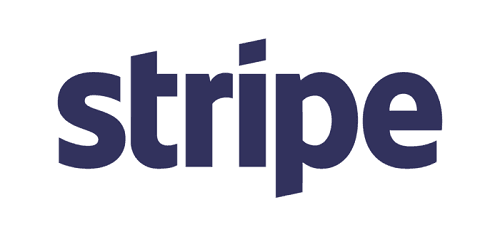Business.com aims to help business owners make informed decisions to support and grow their companies. We research and recommend products and services suitable for various business types, investing thousands of hours each year in this process.
As a business, we need to generate revenue to sustain our content. We have financial relationships with some companies we cover, earning commissions when readers purchase from our partners or share information about their needs. These relationships do not dictate our advice and recommendations. Our editorial team independently evaluates and recommends products and services based on their research and expertise. Learn more about our process and partners here.
Stripe Payment Processing Review and Pricing
Stripe is highly versatile, offering integrations, APIs and developer tools for a custom credit card processing solution.

Table of Contents
Stripe is an online payment processor designed to help businesses of all sizes accept credit card payments for e-commerce, mobile commerce, subscriptions and marketplace transactions. It stands out from competitors with its extensive integrations, flexible developer tools and transparent, pay-as-you-go pricing. Stripe is ideal for businesses seeking a customizable and scalable online payment solution, whether you’re a startup or a large enterprise.
>> Check out our full roundup of the best credit card processors to see more payment processing options.
Why We Chose Stripe for E-Commerce Businesses
Stripe is a worthy credit card processor for e-commerce businesses because of its:
- Versatility and integrations: Integrates with hundreds of e-commerce platforms, shopping carts and business software.
- Transparent pricing: Simple flat-rate fees with no hidden costs, contracts or monthly minimums keep payment processing affordable.
- Developer-friendliness: Provides extensive APIs and tools for creating highly customized payment flows.
- Chargeback fee refund: Stripe refunds the $15 chargeback fee if a dispute is resolved in your favor.
- Global reach: Supports over 135 currencies and international card acceptance.
How Much Does Stripe Cost?
Stripe has simple flat-rate pricing and charges very few fees. There’s no additional cost to use its integrations, prebuilt checkout form or developer tools, making it an affordable payment processing option. We also appreciate the vendor’s transparency — Stripe posts detailed information about its rates and transaction fees on its website. You can also read the service agreements before signing up.
Transaction Rates
- Domestic credit/debit cards: 2.9% + $0.30 per transaction (for all card types, brands, digital wallets)
- ACH debit transfers: 0.8% (capped at $5)
- In-person payments via Stripe terminal: 2.7% + $0.05 per transaction (for all card types)
Potential Incidental Fees
- International cards: Add 1% to the transaction rate
- Currency conversion: Additional 1%
- Chargeback fee: $15 (refunded if dispute is resolved in your favor)
- Refunds: No fee to issue, but original processing fee isn’t returned
Fees You Won’t Pay
- No application or setup fee
- No monthly fees (statements, customer service, gateway)
- No monthly minimum processing fee
- No annual fee
- No PCI compliance fee
- No early termination or account closure fee
Volume Discounts and Special Pricing
- Available for businesses processing more than $100,000 per month
- Custom pricing for microtransactions or abnormally large sales
- Nonprofits may qualify for special pricing
Optional Add-Ons
If you choose to use Stripe’s other products, you’ll pay an additional cost. Options include:
- Stripe Billing
- Stripe Connect
- Radar for Fraud Teams
- Stripe Sigma
- Stripe Atlas
How Quickly Does Stripe Deposit Funds?
Stripe deposits funds in as little as two days in most cases. Here is a breakdown of the payout schedule:
- Initial payout: Your first payout takes seven to 10 business days. This initial window is for risk mitigation and cannot be shortened.
- Subsequent payouts: After the first payout, funds are transferred on a rolling schedule of either 2 or 7 days.
- Most businesses default to a 2-day schedule.
- Higher-risk businesses may be placed on a 7-day schedule.
- You can set your preferred payout frequency (daily, monthly or manual) in your Stripe Dashboard, though the actual payout speed depends on your business’s risk level and country.
- Faster payouts (optional): Stripe offers Instant Payouts to eligible businesses for a fee (typically after 60 days of processing), allowing funds to appear in your bank account in minutes.
Terms of Service
- Account setup: Stripe doesn’t provide you with your own merchant account; instead, you’re set up as a submerchant under its master merchant account.
- Funds holds and account closure: Stripe, as a payment aggregator, may hold funds in reserve or close your account if they suspect high risk, fraud or if your business violates their terms of service (e.g., high chargebacks, selling prohibited products or services, unauthorized use of the platform).
- Prohibited businesses: It’s important to review Stripe’s list of prohibited businesses to ensure your offerings comply. The vendor won’t work with debt relief companies, cannabis dispensaries and merchants in other high-risk industries.
- Compliance: You must follow network rules and PCI standards to maintain account health.
Stripe Features
Stripe offers more than 100 features, from flexible checkout options to recurring billing. You can choose from premade solutions or work with a developer to customize the system.
Here are some of the top features we liked when testing Stripe’s services.
Flexible Online Payment Options
For e-commerce sales, Stripe offers three options to facilitate payment processing: Checkout, Stripe Elements and Stripe.js.
- Checkout: Premade, customizable, Stripe-hosted payment page that easily embeds
- Stripe Elements: UI components to create custom forms with less coding
- Stripe.js/APIs: Full control for developers to build custom payment flows
Subscription and Recurring Billing (Stripe Billing)
This service allows you to create a customized solution for recurring payments and subscription billing.
- Decide how to charge customers, such as a flat recurring fee or based on product usage or tiers.
- Choose how frequently you bill your customers and offer discounts and trial periods.
Marketplace and Platform Solutions (Stripe Connect)
Stripe can provide payment services for marketplaces and platforms, taking care of onboarding users, managing payments, handling compliance issues, tax reporting and more.
In-Person Payments (Stripe Terminal)
Integrate Stripe Terminal into your existing checkout flow or use its SDKs to create your own mobile or web-based app. The company offers two card readers; both are EMV-certified and support chip cards and contactless payments, including mobile wallets like Apple Pay and Google Pay.
- The BBPOS Chipper 2X BT, which costs $59, is a mobile card reader that uses Bluetooth to connect to smartphones and tablets.
- Verifone P400, which costs $299, is a countertop credit card terminal.
Mobile Payment Options
Stripe payments are currently supported on iOS and Android devices. You can add in-app payments if you have a mobile app for your business.
Digital Wallet Support
Stripe allows you to accept payments made using these digital wallets:
- Apple Pay
- Google Pay
- Visa Checkout
- Masterpass by Mastercard
- Amex Express Checkout
- Microsoft Pay
- Alipay
- WeChat Pay
International Currency Support
For businesses with customers outside the U.S., Stripe allows your customers to pay with their local currency. It then converts it, so you receive your funds in your currency. It supports more than 135 currencies.
Integrations
Stripe offers hundreds of integrations across multiple categories so you can start accepting payments quickly, then automatically sync your sales data to the other programs you use. We found connecting Stripe with high-quality accounting software and highly rated CRM software to be particularly valuable. Plugins for third-party services are also available.
Dashboard App
The Stripe Dashboard app for Apple and Android allows you to issue refunds, set alerts, and view daily summaries, reports and historical comparisons. On the Apple version, you can also email customers, search transactions and create new customer subscriptions.
Reporting and Analytics
The Stripe Dashboard has several built-in reports, and you can export your data to CSV files. If you integrate Stripe with other programs, such as your accounting software, it automatically syncs to that application.
In our testing, we like using the analytics tools to view:
- Sales data
- Balance history
- Advanced reporting via Stripe Sigma (extra cost)
Security and PCI Compliance
Stripe takes payment security seriously and has multiple security protocols to keep your customers’ payment data secure. This includes:
- Data security: Uses tokenization, so no card data is stored on your server
- Fraud prevention: Includes Radar, its built-in fraud prevention tool
- PCI compliance: PCI Service Provider Level 1-certified, the highest level; businesses complete an annual self-assessment questionnaire
Customer Support
For assistance with Stripe, you can contact the company or use its online resources, which include searchable documentation, reference guides, articles, tutorials and FAQs. Stripe provides support via phone, email and chat, like many competitors. We impressed to see that customer service is available 24/7, which not all rivals offer.
Limitations
- Designed for developers: Stripe can be overwhelming for non-technical small business owners; custom features may require a developer.
- No inbound phone support: Primary support is via email and online resources, though Stripe will set up a call to handle some issues.
- Merchant aggregator model risks: Since Stripe doesn’t provide individual merchant accounts, there is a higher risk of potential fund holds or account terminations compared to full-service processors.
- Slower initial payouts: You’ll wait at least a week the first time you receive funds.
Bottom Line
We recommend Stripe for…
- E-commerce, mobile and subscription businesses.
- Companies seeking highly flexible online payment processing.
- Businesses with developer resources.
We don’t recommend Stripe for…
- Businesses lacking technical expertise.
- Companies in high-risk industries.
- Brick-and-mortar stores looking for a robust POS system.



